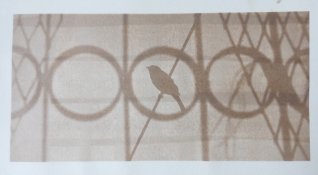Krishnan Srinivasan
Member
Hi All ,
I'm kind of two months experienced with salt printing
I use Silver Metal Salt and Sodium Chloride Salt for my printing process , on a Canson Montval Paper.
Only recently I have started making A4 size prints.
My solutions are about two months old.
I couldn't avoid the brush marks in my pictures. How to get rid of that ?
I do Sepia & Selenium toning to my pictures.
If I pour the silver Nitrate solution & spread , the area in which I poured is creating a mark.
Hence I preferred using a brush... a sponge brush ( common one - black sponge & wooden handle)
which also seems to create marks ..!
How can I avoid ?
The glass rods seems to be not available in India.
Attached a image sample for reference. Forgive the quality of the image , coz it was taken from mobile & has been made to suite the upload.
I'm kind of two months experienced with salt printing

I use Silver Metal Salt and Sodium Chloride Salt for my printing process , on a Canson Montval Paper.
Only recently I have started making A4 size prints.
My solutions are about two months old.
I couldn't avoid the brush marks in my pictures. How to get rid of that ?
I do Sepia & Selenium toning to my pictures.
If I pour the silver Nitrate solution & spread , the area in which I poured is creating a mark.
Hence I preferred using a brush... a sponge brush ( common one - black sponge & wooden handle)
which also seems to create marks ..!
How can I avoid ?
The glass rods seems to be not available in India.
Attached a image sample for reference. Forgive the quality of the image , coz it was taken from mobile & has been made to suite the upload.



